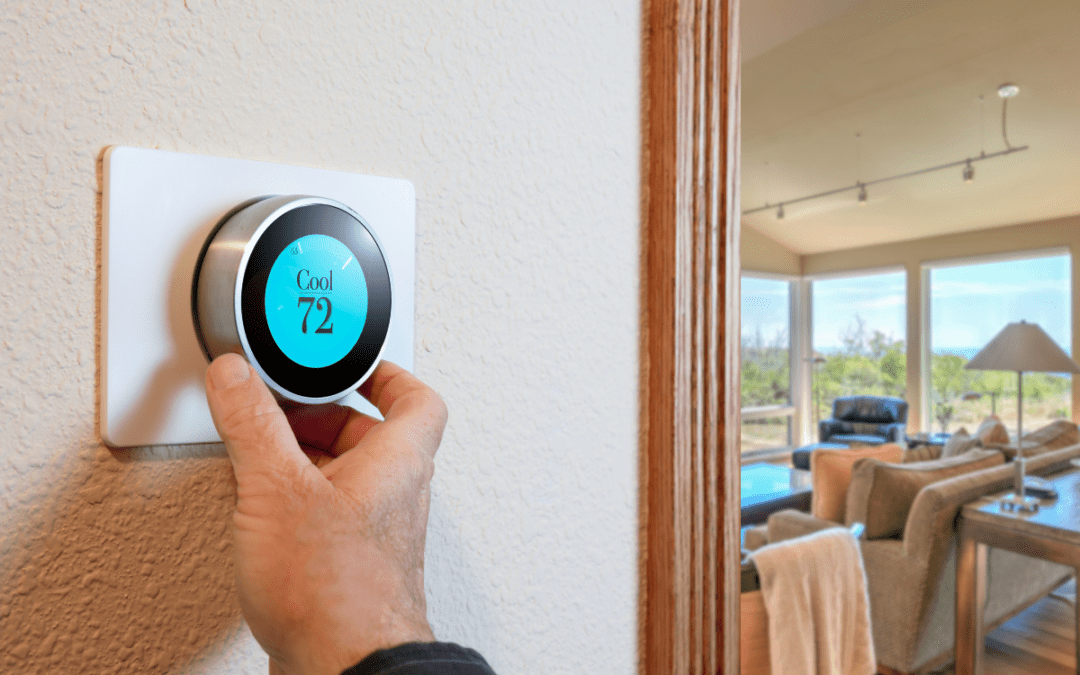Maintaining a comfortable indoor temperature is crucial for creating a pleasant living environment, but it can be challenging when the sun’s heat keeps sneaking in through your windows. Excessive heat gain during the summer and heat loss in the winter can make it difficult to keep your home at the perfect temperature without constantly adjusting your thermostat. One of the most effective ways to control your home’s indoor temperature is through window tinting. By adding a protective film to your windows, you can manage heat more efficiently, lower energy bills, and enjoy a more consistent indoor climate year-round.
In this article, we’ll explore how window tinting works to control indoor temperatures and improve your home’s overall comfort.
1. Blocking Solar Heat Gain in Summer
During the hot summer months, windows are one of the main sources of heat entering your home. The sun’s rays can penetrate through your windows, raising the indoor temperature and forcing your air conditioning system to work harder. This not only increases energy consumption but also makes it difficult to keep your home cool.
How Window Tinting Helps: Window tinting films, especially those designed for solar control, reflect or absorb a significant portion of the sun’s heat. The film blocks infrared radiation, which is the primary cause of solar heat gain, and keeps the heat from entering your home. Some high-quality films can block up to 75% of solar heat, making a noticeable difference in indoor comfort.
By reducing the amount of heat that enters through your windows, window tinting helps maintain a cooler indoor temperature and reduces the load on your air conditioning system. This translates into lower energy bills and a more comfortable home during the summer.
- Benefit: Helps keep your home cool by blocking solar heat gain.
- Consideration: Window tinting allows natural light to enter, so your home stays bright without the excessive heat.
2. Reducing Heat Loss in Winter
While heat gain in the summer is a major concern, losing heat in the winter can also drive up your heating bills. Windows, especially older ones or single-pane glass, can allow warm air to escape, making it harder to maintain a cozy indoor temperature. This leads to greater energy use as your heating system works overtime to compensate for the lost warmth.
How Window Tinting Helps: Some types of window tinting films, like Low-E (Low Emissivity) films, are designed to reflect heat back into your home. These films work by trapping heat inside your home during the colder months, preventing it from escaping through your windows. The Low-E coating reflects the warmth from your heating system back into the room, helping maintain a stable and comfortable indoor temperature.
By reducing heat loss, window tinting films with reflective coatings improve your home’s energy efficiency during the winter, making it easier to stay warm without using excessive energy.
- Benefit: Keeps your home warm by reflecting heat back into the room during winter.
- Consideration: Low-E films are effective without darkening your windows, so you can still enjoy natural light.
3. Improving Insulation and Comfort
Even in moderate climates, fluctuations in indoor temperature can lead to discomfort. A room may feel overly warm or cold depending on the direction your windows face and how much sunlight they receive. This can create uneven heating or cooling, making some parts of your home feel hotter or cooler than others.
How Window Tinting Helps: By applying window tinting, you can enhance the insulation of your windows. Window films act as a barrier between the indoor and outdoor environments, reducing the transfer of heat through the glass. This helps maintain a consistent temperature inside your home, regardless of the weather outside.
For example, rooms with large windows that face the sun often experience significant heat gain in the summer. Window tinting can help regulate the temperature in those rooms, making them more comfortable to live in without the need for constant air conditioning or fans.
- Benefit: Helps regulate the temperature of each room for consistent comfort throughout your home.
- Consideration: Choose the right type of film to match your specific needs for both heat reduction and light transmission.
4. Energy Savings and Lower Utility Bills
The primary advantage of window tinting when it comes to temperature control is its ability to reduce the energy needed for heating and cooling. By blocking excess solar heat in the summer and retaining warmth in the winter, window tinting helps maintain an optimal indoor temperature without putting undue strain on your HVAC system.
How Window Tinting Helps: Because window tinting reduces the need for air conditioning and heating, your energy bills can drop significantly. Studies have shown that window tinting can reduce cooling costs by up to 30% and heating costs by a similar amount. Over time, this reduction in energy usage not only saves you money but also helps to reduce your carbon footprint, making your home more environmentally friendly.
- Benefit: Reduces energy consumption and lowers utility bills.
- Consideration: The initial cost of professional installation may be higher, but the long-term savings make it a worthwhile investment.
5. UV Protection to Prevent Damage
While controlling the temperature is a major benefit of window tinting, it’s important to remember the added advantage of UV protection. UV rays are not only harmful to your skin but also contribute to the fading of your furniture, floors, and artwork. By blocking up to 99% of harmful UV rays, window tinting helps protect your interiors from sun damage, ensuring they stay looking fresh and vibrant for years.
How Window Tinting Helps: In addition to controlling temperature, window tinting protects your home’s furniture and décor by preventing the sun’s damaging UV rays from entering your living space. This means less fading and longer-lasting furniture and flooring, which adds long-term value to your home.
- Benefit: Protects your home’s interior from UV damage, extending the life of your furnishings and floors.
- Consideration: Some films also offer anti-glare and privacy features, providing even more benefits.
6. Choosing the Right Window Film for Temperature Control
When selecting window tinting for temperature control, it’s important to choose the right type of film based on your climate and needs. Here are some of the most common types of films for controlling indoor temperature:
- Solar Control Films: These films are ideal for reducing solar heat gain in the summer while also blocking UV rays. They help keep your home cooler and more comfortable.
- Low-E Films: Perfect for winter months, these films reflect heat back into the room, helping to keep your home warm and energy-efficient.
- Ceramic Films: These non-metallic films offer high heat rejection and UV protection without darkening your windows, making them ideal for areas with high heat gain.
Conclusion
Window tinting is an effective and cost-efficient solution for controlling the indoor temperature in your home. By reducing heat gain in the summer and heat loss in the winter, window tinting helps maintain a consistent and comfortable climate year-round. With the added benefits of UV protection and energy savings, window tinting is a smart investment for any homeowner looking to improve comfort and reduce utility bills. If you’re ready to improve your home’s temperature control and enjoy long-term savings, professional window tinting installation is the way to go.

